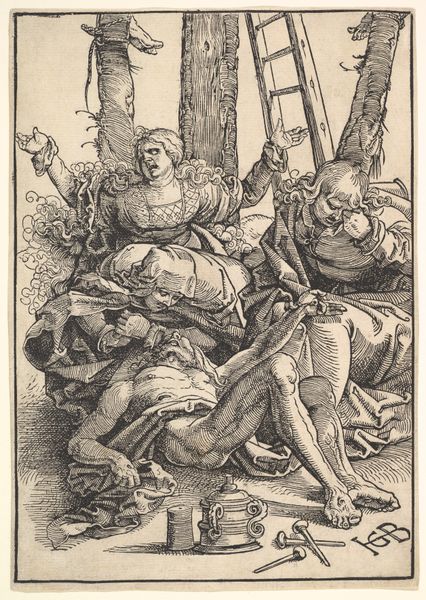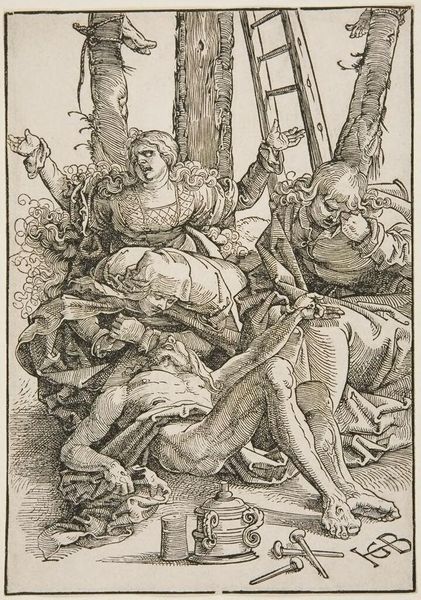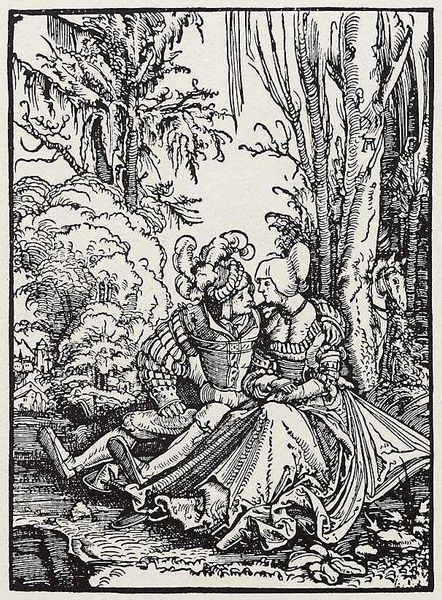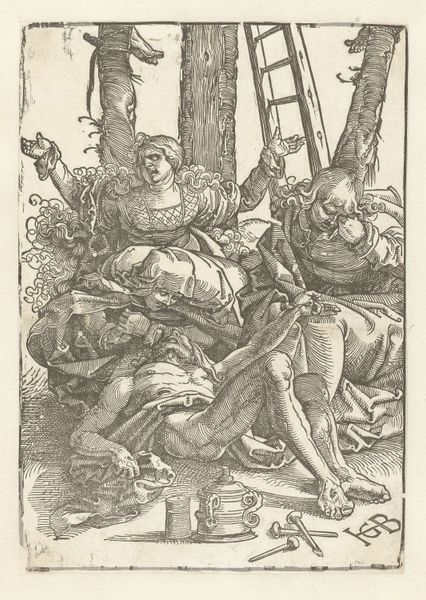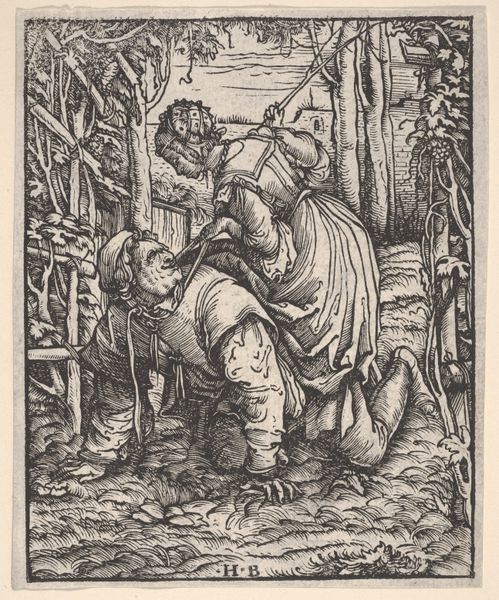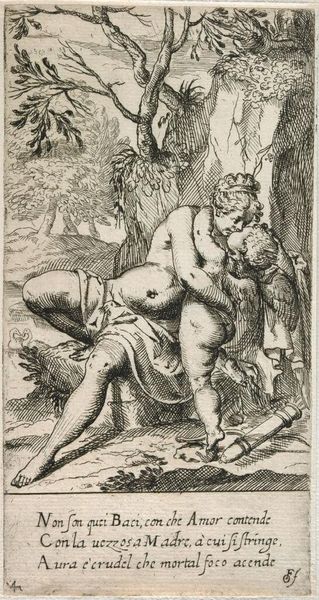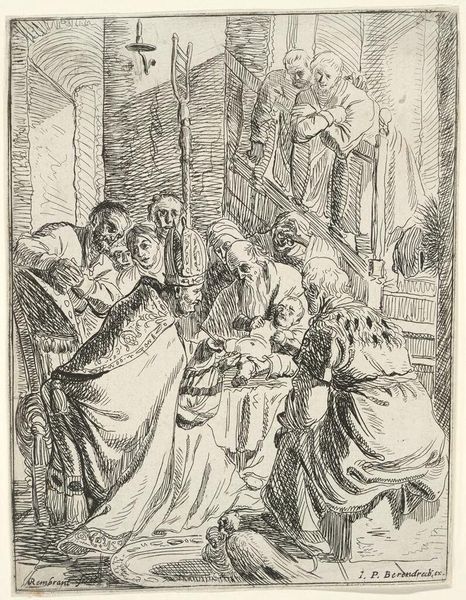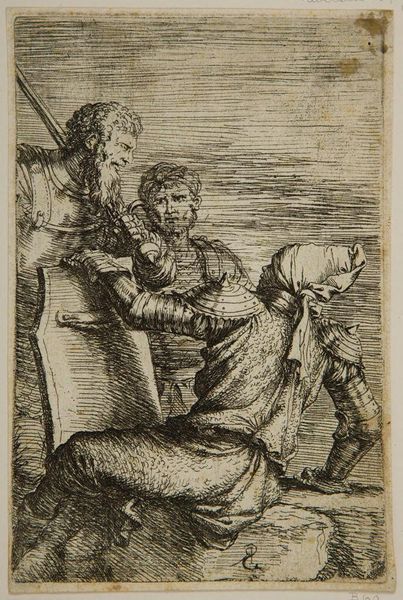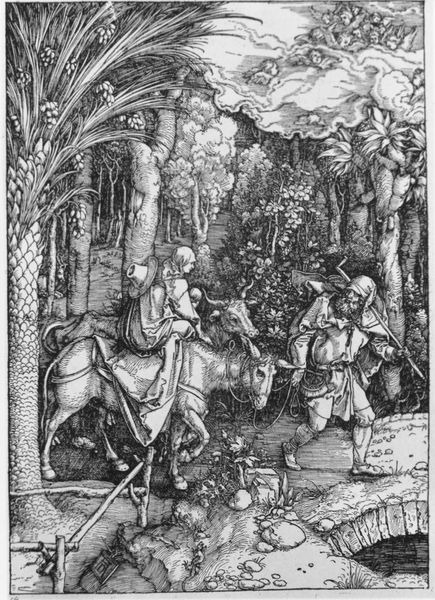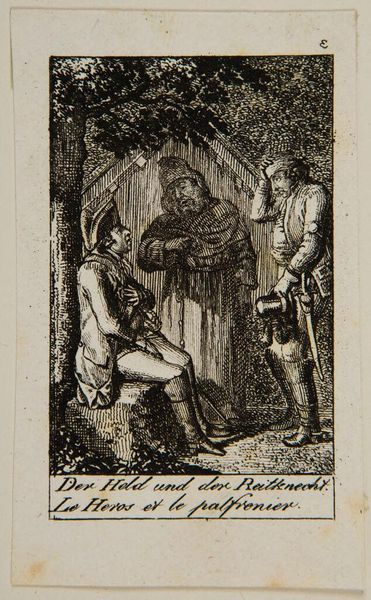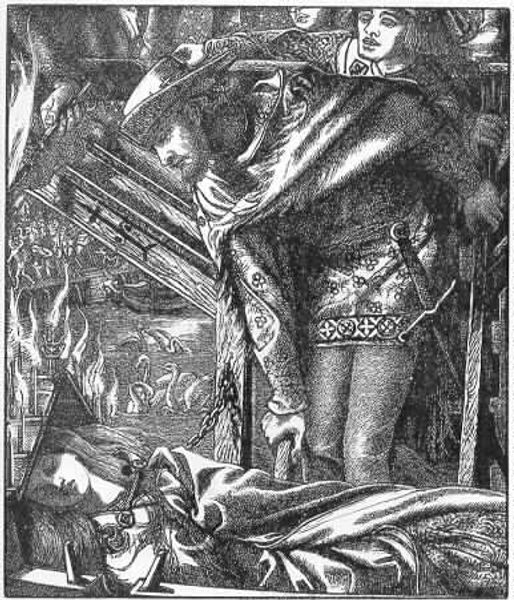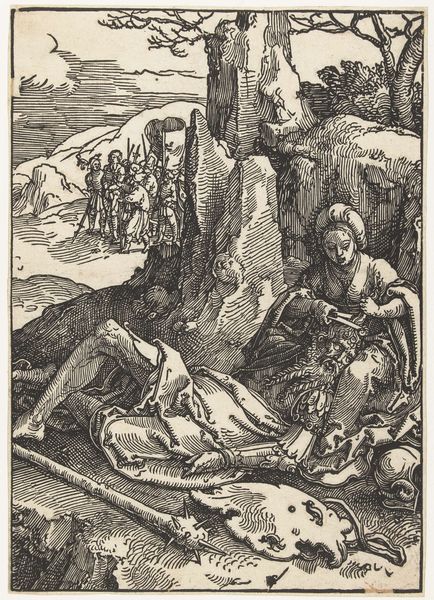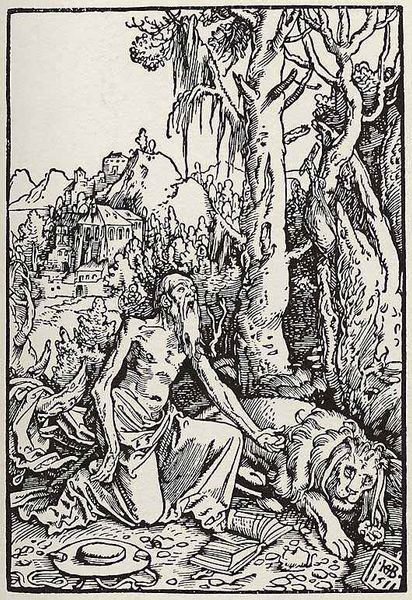
print, woodcut, engraving
#
portrait
# print
#
figuration
#
jesus-christ
#
linework heavy
#
woodcut
#
christianity
#
line
#
history-painting
#
northern-renaissance
#
engraving
#
virgin-mary
Copyright: Public domain
Curator: Look at this haunting woodcut, "Lamentation," created around 1515 by Hans Baldung. Editor: My first impression is how intensely wrought with emotion this is. The heavy lines, the figures almost piled atop each other... it's overwhelmingly grief-stricken. Curator: It’s powerful, isn't it? Baldung, a prominent figure in the Northern Renaissance, really utilizes the woodcut medium to its full potential here. The stark contrast between light and shadow contributes to the overall dramatic effect, a characteristic hallmark of that period. The lines, deeply etched, emphasize not just form but also emotional tension. Editor: Thinking about the production of this image, imagine the labor involved in carving those incredibly detailed lines into the woodblock! The fact that this image would then have been widely reproduced means that Baldung's depiction of grief became a shared experience across the communities that viewed it. It takes a well known moment in Christian lore and makes it accessible and tangible for mass consumption. Curator: Precisely. The choice of a print, rather than a unique painting, speaks volumes about the intended audience and the socio-political function of the image. Prints were, of course, far more accessible and allowed for the dissemination of ideas. In the context of the Reformation brewing at the time, the lamentation of Christ, imbued with this much suffering, would surely elicit strong emotional responses. It was also made for ordinary folks in the North to consider the role of grief in the most important story of Christianity. Editor: Consider also how the figures are clothed. The elaborate attire of the mourning women – those ruffled collars, for instance – highlights not only their status, but also the society to which this image circulated. By so clearly reflecting material culture, the artwork integrates sacred narrative into the everyday. The inclusion of items such as ointment jars and nails is also indicative of their world. Curator: That’s insightful, highlighting that intersection of the divine and the material. For me, what’s particularly striking is how Baldung used the print medium to create a powerful public expression of faith and suffering in a time of great social and religious upheaval. It encouraged empathy, perhaps even action. Editor: Yes, the art makes us appreciate the intersection of devotion, craft, and cultural dialogue happening around the print and images in the everyday lives of those in Baldung's society.
Comments
No comments
Be the first to comment and join the conversation on the ultimate creative platform.
